Cycling to the South Pole

Kate Leeming has a dream to bicycle across Antartica.To help make it a reality, she has gone on training expeditions on multiple continents, and collaborated on new technologies. Four years after she started preparing, it’s go time.
Sometime in the next two years, Australian endurance athlete Kate Leeming will try to become the first person to bicycle across Antarctica on an expedition named "Breaking the Cycle: South Pole.” In six weeks, she’ll cover 1,800 kilometers, most likely travelling from Leverett Glacier to Hercules Inlet and tagging the South Pole on the way. Temperatures will range as low -40 degrees Celsius and catabatic winds will scour the glaciated landscape she crosses. (See this video about climber Mike Libecki’s expedition to Antarctica for an idea of just how powerful catabatic winds are.)
When she first conceived of the idea to cycle the coldest continent, Leeming wasn’t sure it was possible, not least because of the type of bike it would require. “But with the advent of modern technology, I realized maybe I could do it,” she says.
She partnered with motorcycle and bicycle designer Steve Christini to put his all-wheel drive (AWD) technology into a fatbike—a bike with large tires that performs much better on snow and other soft surfaces.
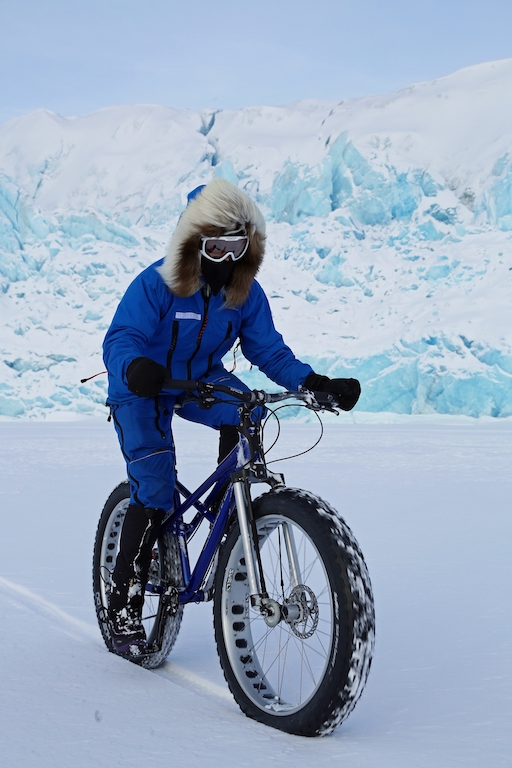
Leeming put the first prototype to the test on a one-week expedition to Svalbard, Norway in 2013. The AWD function worked well, “but the bike didn’t have a wide enough tire for me,” she says. “Flotation”—being able to stay atop the soft snow—“is key.”
The second iteration of the Christini AWD fatbike featured a slightly larger tire. Leeming tested it out over on a several week expedition in Greenland’s Jameson Land and Liverpool Land. “That bike had a slightly wider tire,” Leeming says. However, it still wasn’t to her liking.
The third and final version of the bike can accommodate an even wider tire. She put it through the gauntlet over four weeks in the Yukon, from March to April 2017, and had no qualms about its performance. “It’s amazingly efficient,” Leeming says, “and it’s really in its element on a soft surface, particularly when its steep.”
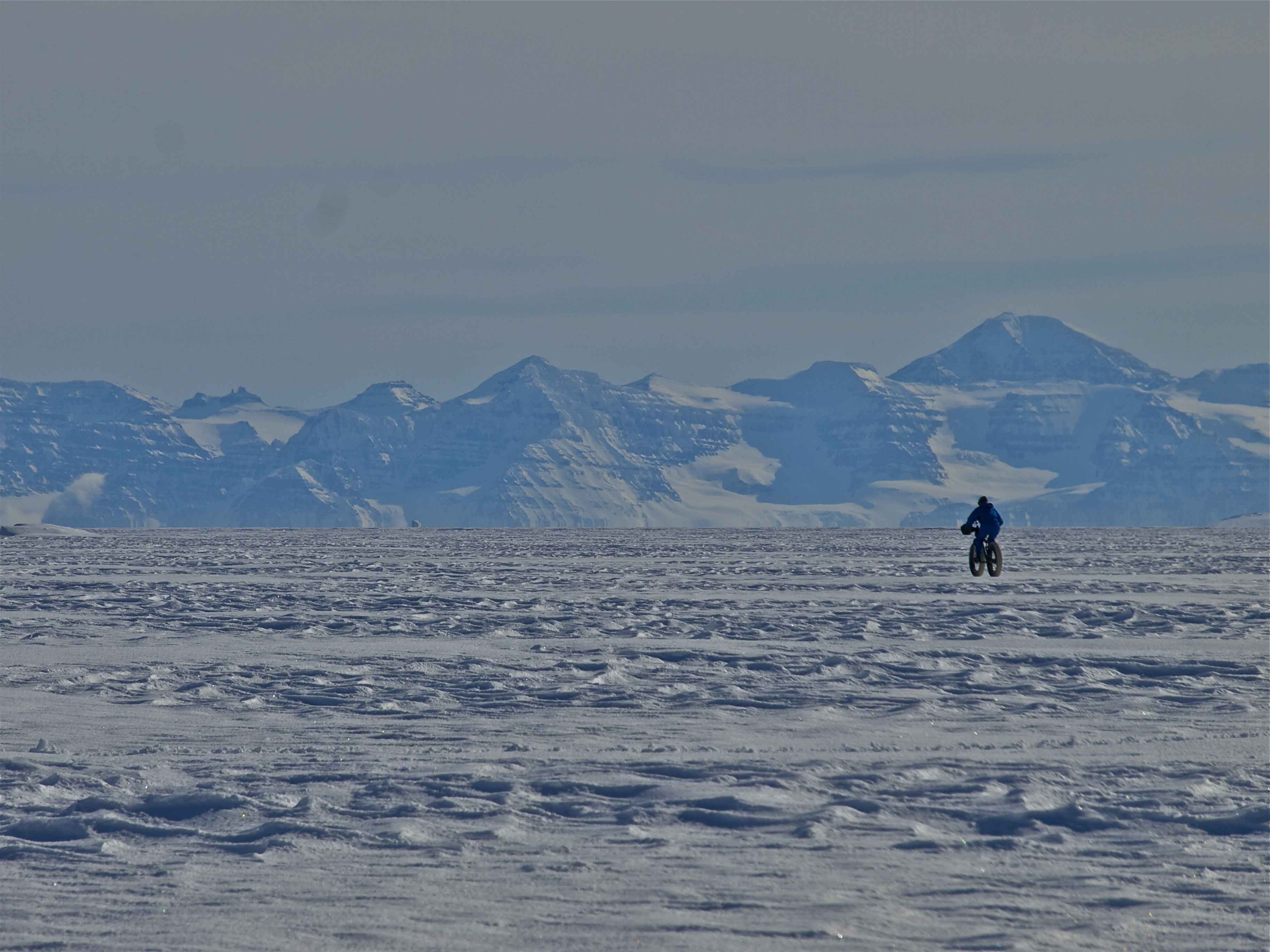
While Leeming has been explicitly preparing for this expedition since 2013, it is also a culmination of two decades worth of adventures. “Each expedition builds on what I’ve learned from my other expeditions,” she explains.
In 1993, Leeming completed her first major expedition, becoming the first woman to cycle across Europe, covering 13,400 kilometers on her way from St. Petersburg to Vladivostok. Following that expedition, she spent the next ten years pursuing her other passion of real tennis (known as court tennis in the U.S.). She rose to the world’s second ranked position on the women’s circuit, and continues to work as a real tennis professional to this day.
But the open road lured her back. In nine months from 2004 to 2005, Leeming cycled unsupported for 25,000 kilometers around her native Australia, raising awareness about education for sustainable development. “It was also a personal discovery for me, learning how my country fits together.”
Her third and most recent major expedition took her 22,000 kilometers across Africa, from Senegal to Somalia. On her CV, Leeming writes that she explored “the causes and consequences of extreme poverty and [looked] specifically at initiatives that give a leg up rather than a hand out. This is believed to be the first bicycle crossing of the African continent from its most westerly to its most easterly points in an unbroken line. ... It was an Official Activity for the United Nations Decade of Education for Sustainable Development (2005-2014).”
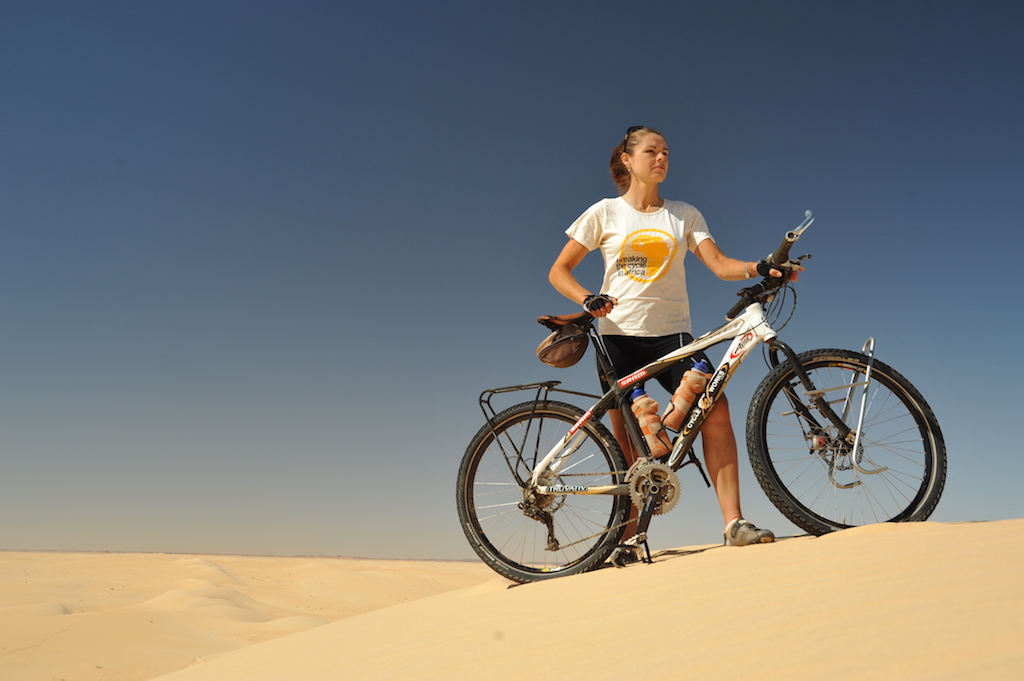
She will draw attention to several of the UN’s Sustainable Development Goals (SDG) on her Antarctica expedition, too, in a same way to what Mina Guli did on her recently completed 6 River Run. A major influence on these altruistic aspects was polar explorer Robert Swann, whom she met while planning her ‘93 Russia expedition. “He inspired me to understand that there’s a lot more value to what I was doing if I wanted to make it more than just riding a bike,” Leeming says. “So with Russia, the goal was to aid children affected by the Chernobyl disaster. On all my expeditions since, I’ve tried to benefit the people of the places I’m riding through.”
In Antarctica, Kate will be cycling to support SDG initiatives 1, 4 and 5, which aim to the eliminate poverty, ensure access to quality education and ensure gender equality for all the world’s populations, respectively.
She will also raise money through her ride for Y Genergation Against Poverty (YGAP), which “finds, accelerates, supports and grows early stage entrepreneurial ventures run by local leaders with solutions to poverty in their communities” in Kenya and South Africa.
The big question mark at present is whether Leeming will start the expedition in the fall of 2017 or the fall of 2018. “I think the toughest road is the road to get there in the first place,” she says.
She has raised all but the last little bit of funding she needs to finance the expedition, but is still looking for a few key sponsors to foot the bill. Her main sponsor is a German engineering company called Hellgeth, which will coordinate the logistics and support in Antarctica. A last minute snafu related to a vehicle Leeming’s team needs in the Antarctic is the main hold-up at the moment, and the linchpin upon which the decision to start in 2017 or 2018 hinges.
Leeming would love to go this year, but if everything isn’t in place, she’s willing to wait the extra months “I’m only ever going to do this once,” she says, “so I want to make sure it’s the best it can ever be.”
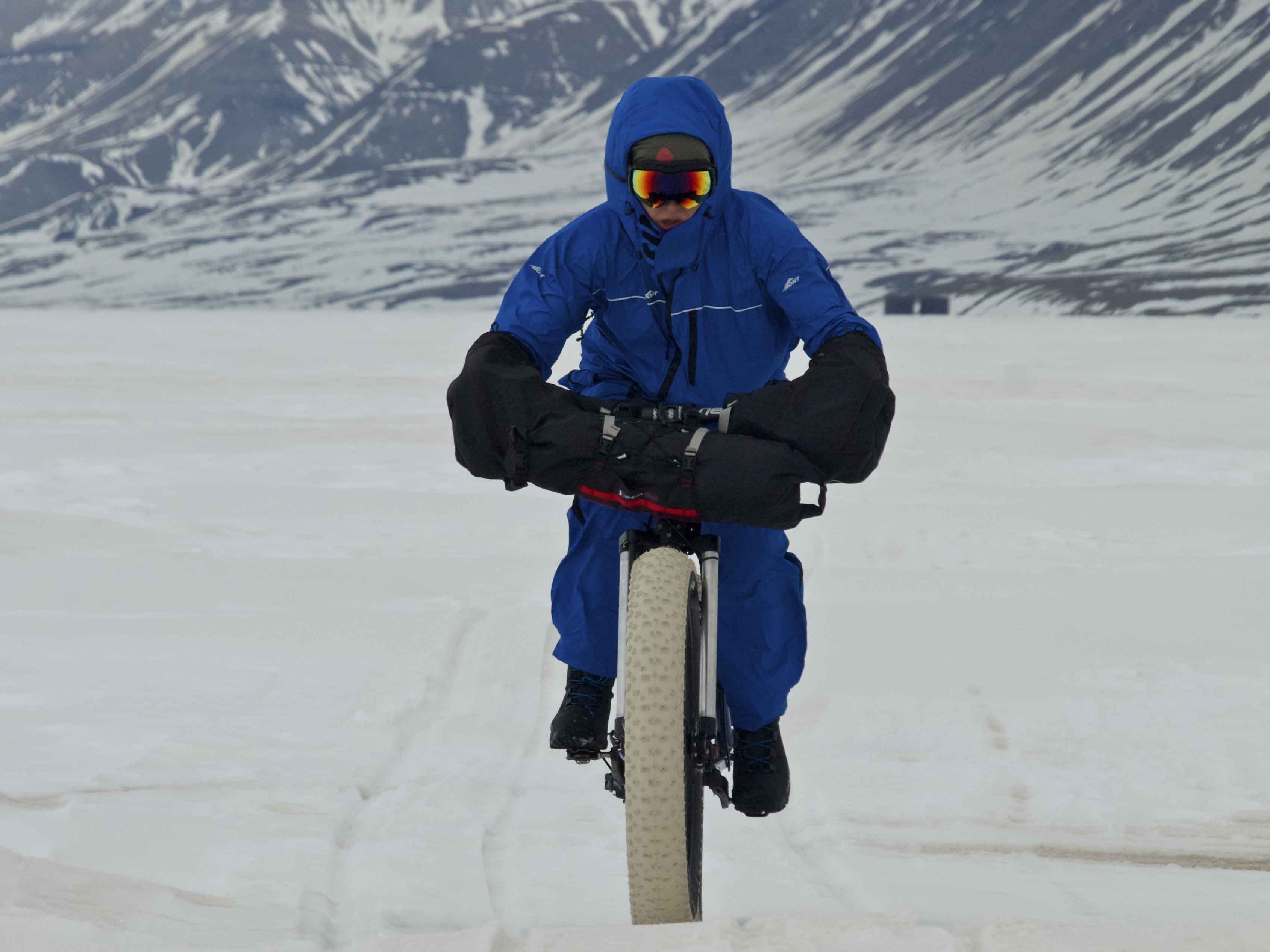
Feature Image: Drone shot of Leeming cycling near a hunting cabin on the way to Shingle Point, the Yukon, Canada. Photo: Courtesy of Kate Leeming.



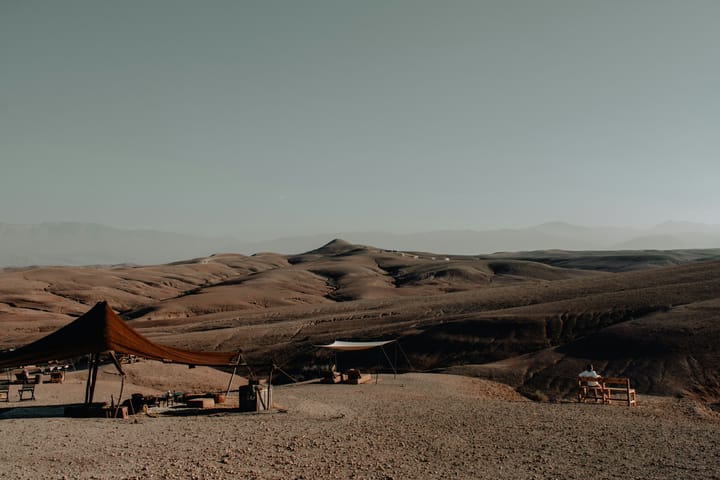

Comments ()